Cristina Rottondi
Liquid Neural Network-based Adaptive Learning vs. Incremental Learning for Link Load Prediction amid Concept Drift due to Network Failures
Apr 08, 2024
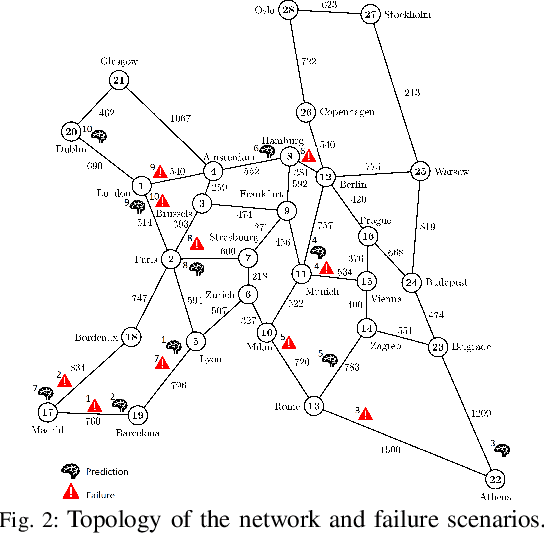

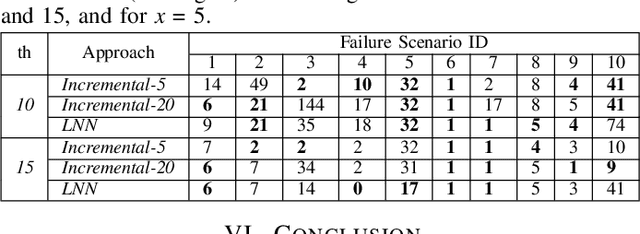
Abstract:Adapting to concept drift is a challenging task in machine learning, which is usually tackled using incremental learning techniques that periodically re-fit a learning model leveraging newly available data. A primary limitation of these techniques is their reliance on substantial amounts of data for retraining. The necessity of acquiring fresh data introduces temporal delays prior to retraining, potentially rendering the models inaccurate if a sudden concept drift occurs in-between two consecutive retrainings. In communication networks, such issue emerges when performing traffic forecasting following a~failure event: post-failure re-routing may induce a drastic shift in distribution and pattern of traffic data, thus requiring a timely model adaptation. In this work, we address this challenge for the problem of traffic forecasting and propose an approach that exploits adaptive learning algorithms, namely, liquid neural networks, which are capable of self-adaptation to abrupt changes in data patterns without requiring any retraining. Through extensive simulations of failure scenarios, we compare the predictive performance of our proposed approach to that of a reference method based on incremental learning. Experimental results show that our proposed approach outperforms incremental learning-based methods in situations where the shifts in traffic patterns are drastic.
A Deep Learning Approach for Low-Latency Packet Loss Concealment of Audio Signals in Networked Music Performance Applications
Jul 14, 2020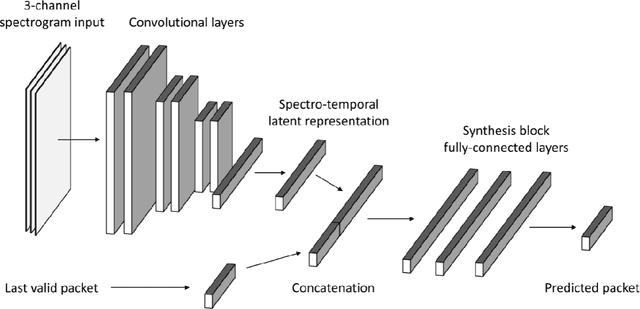
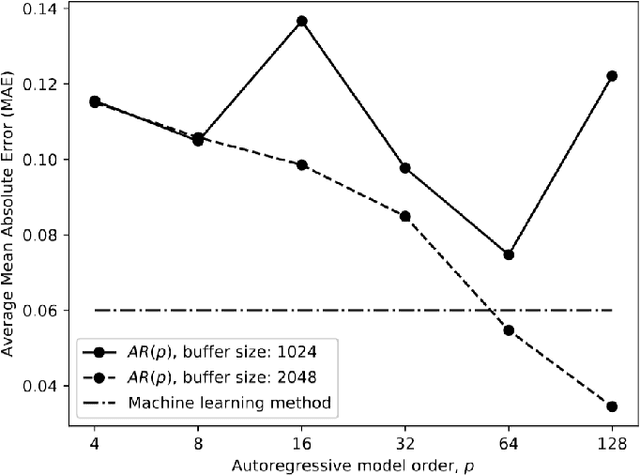
Abstract:Networked Music Performance (NMP) is envisioned as a potential game changer among Internet applications: it aims at revolutionizing the traditional concept of musical interaction by enabling remote musicians to interact and perform together through a telecommunication network. Ensuring realistic conditions for music performance, however, constitutes a significant engineering challenge due to extremely strict requirements in terms of audio quality and, most importantly, network delay. To minimize the end-to-end delay experienced by the musicians, typical implementations of NMP applications use un-compressed, bidirectional audio streams and leverage UDP as transport protocol. Being connection less and unreliable,audio packets transmitted via UDP which become lost in transit are not re-transmitted and thus cause glitches in the receiver audio playout. This article describes a technique for predicting lost packet content in real-time using a deep learning approach. The ability of concealing errors in real time can help mitigate audio impairments caused by packet losses, thus improving the quality of audio playout in real-world scenarios.
A Survey on Application of Machine Learning Techniques in Optical Networks
Oct 05, 2018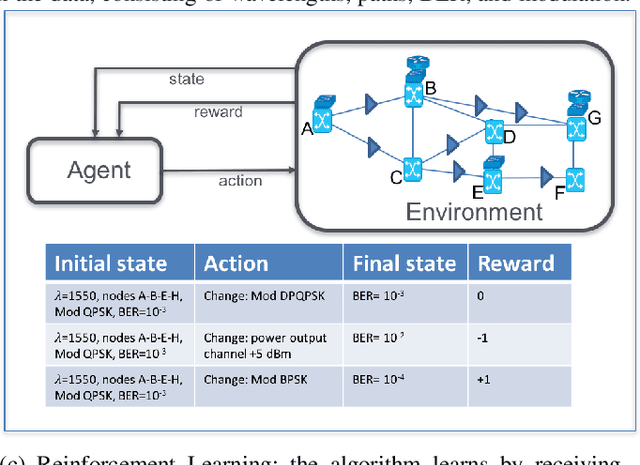
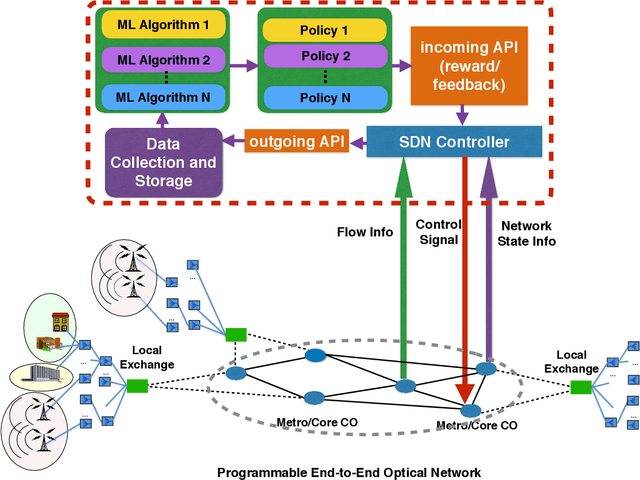
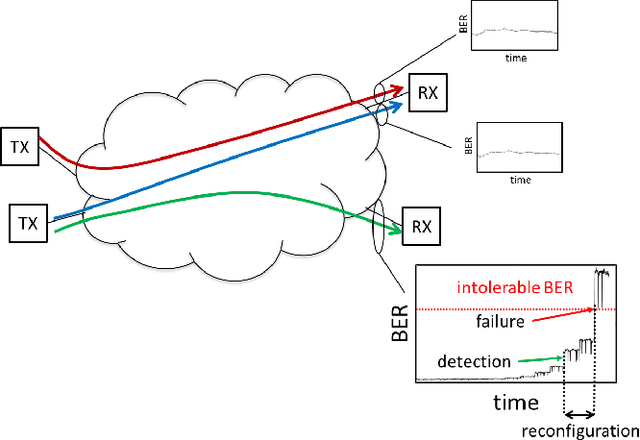
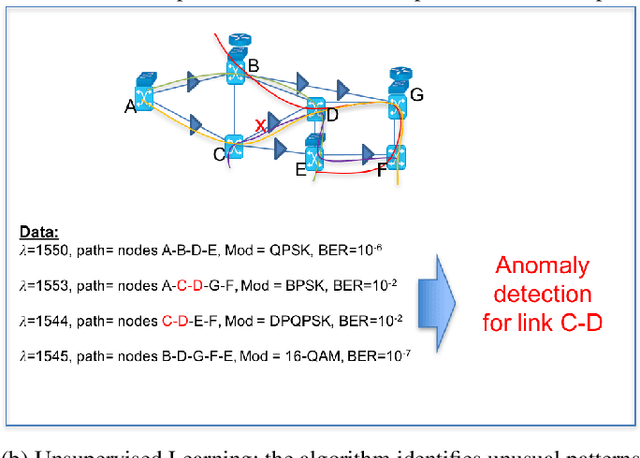
Abstract:Today's telecommunication networks have become sources of enormous amounts of widely heterogeneous data. This information can be retrieved from network traffic traces, network alarms, signal quality indicators, users' behavioral data, etc. Advanced mathematical tools are required to extract meaningful information from these data and take decisions pertaining to the proper functioning of the networks from the network-generated data. Among these mathematical tools, Machine Learning (ML) is regarded as one of the most promising methodological approaches to perform network-data analysis and enable automated network self-configuration and fault management. The adoption of ML techniques in the field of optical communication networks is motivated by the unprecedented growth of network complexity faced by optical networks in the last few years. Such complexity increase is due to the introduction of a huge number of adjustable and interdependent system parameters (e.g., routing configurations, modulation format, symbol rate, coding schemes, etc.) that are enabled by the usage of coherent transmission/reception technologies, advanced digital signal processing and compensation of nonlinear effects in optical fiber propagation. In this paper we provide an overview of the application of ML to optical communications and networking. We classify and survey relevant literature dealing with the topic, and we also provide an introductory tutorial on ML for researchers and practitioners interested in this field. Although a good number of research papers have recently appeared, the application of ML to optical networks is still in its infancy: to stimulate further work in this area, we conclude the paper proposing new possible research directions.
 Add to Chrome
Add to Chrome Add to Firefox
Add to Firefox Add to Edge
Add to Edge